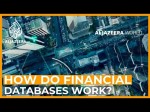Video Transcription:
Cryptocurrencies, the ICO Craze, and Institutional Investors (w/ Paul Veradittakit)
TYLER NEVILLE: Paul Veradittakit, partner at Pantera, we're really happy to have you back. We had Dan about a year ago on Real Vision. I'm really excited to get you here. PAUL VERADITTAKIT: Really excited to be here for the first time. I've heard great things and our colleagues love you guys. TYLER NEVILLE: Love it. Love it. Great to hear. So, why don't you just give us a recap of Pantera and how you began? PAUL VERADITTAKIT: Yeah. Pantera's started by Dan Moorehead. He used to be at Tiger Management. He was CFO, head of global macro trading. Pantera used to be a $1.5 billion global macro shop. And then since 2012, 2013, focused exclusively on investing into cryptocurrencies and blockchain companies and assets. Right now, we've grown from a small team all the way up a team of 25 people right now. We're very, very institutional. We have guys with backgrounds from Bridgewater and JP Morgan, et cetera. And a great team of just really experienced investors with a good track record. Right now, we managed about 600 million of assets under management across four different strategies. So, we have a Bitcoin Fund, which is like a private ETF or a Bitcoin tracker. It just allows people to buy bitcoin through us. They tell us when and how much they want to buy, we do it for them. We manage everything in the backend. They don't even know about it. They send us USD, and whenever they want to sell their Bitcoin, they get USD back. We also have a VC arm, which invest into blockchain companies that are raising equity. Now, the equity is purely equity, but sometimes it could include tokens as part of it, but I think that's going to be a smaller subset of the fund. And then we have what we call our ICO Fund, which is investing into presales. So, if you guys are familiar with ICOs, initial cloud offering, before, you go out to the public with your token, whether it's just launching it to the public, where they can buy it off exchanges, or whether it's directly selling it through exchanges, before that, you need to raise capital to build up a team, build up some product, maybe do some marketing, solve regulatory issues. And all of that is what institutional investors like us will be investing into before the ICO, it's called the presale round. And so, that fund invest into presale rounds of projects. And then eventually, we'll get out of those tokens and go back into other presale rounds. So, it's a pre-sale focused fund, call it like early stage fund for tokens versus our fourth strategy, which is our digital asset fund. You can call that our growth stage strategy for tokens, where we're actively investing into cryptocurrencies that are already on exchanges. Just like anybody else, they can go and buy them on exchanges. But the advantages were discretionary picking tokens that we think are going to be successful lease in this short, if not the medium to long term. And most of that fund is discretion, we do have the opportunity to short positions if you want. And we also have the opportunity to layer on different strategies. It is a multi-strat active fund where we can also do some quants, we can also do some fixed income strategies, et cetera. TYLER NEVILLE: Interesting. Any ARB strategies? PAUL VERADITTAKIT: We're thinking about that. Nothing is out of the question. I think with ARB, spreads are getting smaller and smaller, and it's not as scalable, but anything's possible. TYLER NEVILLE: Gotcha. So, why don't you give us a recap of the end of 2017, beginning of 2018 up until now, how's the ecosystem changed in Pantera's eyes? PAUL VERADITTAKIT: Yeah, it's crazy. I can't even tell you a little bit about like just when I joined Pantera, 2014, and how it's progressed all the way until now. It's been crazy. So, my background is mostly in VC. I'm being a VC now for nine years. And so, that's what I brought the Pantera like the hedge fund experience with Dan, you got Joey with the operational technical experience and myself at the VC experience. So, when it was 2014, when I joined Pantera, I think there's only 10 companies in this space, I could list them all on a piece of paper. And I was like, all right, which ones do you want to hit up right now. And it grew quite a bit in 2015, we started seeing a lot of exchanges, a lot of cross border companies. And then 2016 was the year where all these enterprises, Goldman Sachs started making investments, JP Morgan started doing their private blockchain stuff and things started slowing down a bit, there wasn't any consumer traction, whether it is speculation or whether it was store of value. And then 2017 was just like you mentioned, it was insane. What really brought that on was- we had Bitcoin as a store of value and then started off as a way to move money across borders, that was like a big use case for Bitcoin and still is actually the biggest use case all cross border payments are done using Bitcoin versus any other cryptocurrency and that's where it most liquidity is at. And 2017, or actually, late 2016, was where we started diving deeper into Ethereum and the ecosystem started going, a lot of developers started building on it. And the first use case was being able to issue a token to have a function within your product and technology and be able to actually raise capital for your open source project, from not only private investors, but retail and community investors. And that's a great way to give skin in the game or give value of your project to early adopters and have them go out there and promote and sell your product and your company. And that just turned into wild mania. 2017- TYLER NEVILLE: Liquid venture capital. PAUL VERADITTAKIT: Liquid venture capital. And I think on top of just like the liquidity part, but it was the global part too. Anybody could be- any retail investor could be investing to any project all over the world. So, traditional venture capital, it's about like companies looking at certain way, companies being built in certain locations. Now, anybody could be raising capital from anybody around the world, and there was less limitations, you didn't have to be accredited. And on top of that, you can get liquidity almost like the next week. And so, you put that all together like, over 20 billion has gone into this space, so a lot of it went in on 2017. And we're seeing projects go out there, hit the market, and raise their private sale, raise their crowd sale. And a week later, they're already up 5, 10, 20X. I've seen some, like, within the span of weeks, hit 100X, in terms of return. It's insane. I still remember like we did a sale, or we participated in a sale, and it was up 3X, and we were just so disappointed. TYLER NEVILLE: Triple my money? PAUL VERADITTAKIT: Triple my money. This is not great compared to the norm. TYLER NEVILLE: The government came in and started hovering. PAUL VERADITTAKIT: Exactly. So, what happened in late 2017 and early 2018 was the government started sniffing around, the SEC started cracking down on some really obvious scams. I think it's the combination of the taxes to the SEC stuff, which also- and then basically investors getting smarter and then I think the fourth thing is the exchanges themselves. They're being targeted by regulations, because those guys are the gatekeepers in terms of who gets to access these cryptocurrencies, in which cryptocurrencies are being offered to investors. And so, once the exchanges started to slow down the listing of tokens, that in combination with projects, like actually putting up lockups and investing schedules. So, one of the big things that you mentioned that was really appealing about this space to investors was to be able to make money, but in a quick way, generating high IRRs. And once that became gone, and there was a lot more requirements and a lot of regulatory uncertainty, a lot of this scam projects started to back away. And what we saw in 2018 was the prices dropping, people are selling, uncertainty around the space, and then capital just starting to back away. TYLER NEVILLE: As someone who is in the space and is, well, probably the most venerated firm in crypto, did you guys know it was just so much shit at the time? Or was it just like, oh, my God, the capital's coming in, if we don't participate, we're going to underperform? Was it a little bit of both of those? PAUL VERADITTAKIT: Yeah, there's definitely pressure to deploy capital into exciting projects, and knowing that there was liquidity there, you can really just act more like a hedge fund a bit. But nevertheless, we had a ton of capital that was coming in, and we wanted to make sure that we were getting it out there and helping our company succeed, and really just taking advantage of this momentum. Nevertheless, we've been long term investors in this, we come from more of- I come from more of a VC background. So, every single project that I invest into, I want to try to help them maximize their potential. Obviously, some projects aren't going to get there and then you take a step back and you recalibrate and go into projects. But yeah, there was definitely a lot of pressure to really go out there and hunt for these deals. And it's tough, because at the time, there was just a ton of capital, capital was a commodity. And I think for us, being Pantera and having that reputation, having all that value add that you can bring to projects, we always had the opportunity to participate at least in some way. But the clock was ticking, because every project had so much available capital that they'd rather not spend a lot of time on fundraising. So, sometimes we get projects, and we would have two or three days to make a decision. And if not, we lose our spot. And that's not great. Because, as an investor, it's hard to do great diligence in two, three days and make sure that you are covering all your bases, and so a lot of times that you really had to just work really, really hard to get these deals done. And you're right, there's a ton of noise out there. We were getting maybe 60 or 70 white papers a week. And soTYLER NEVILLE: Just a pure supply of it, probably. PAUL VERADITTAKIT: Just a pure supply of it. And you know how you get your best deals mostly from referrals. I think that's where that channel really mattered more than anything else. A lot of the cold email is we'd have to- we look at everything, but we really prioritize papers that were coming from really strong referrals and really strong connections, because you just can't go through like that type of volume. TYLER NEVILLE: Yeah. Especially with five, 10 people at the time, probably, more. PAUL VERADITTAKIT: Exactly, and only three or four guys in the investment team and just focusing on investments, but then also trying to help your companies. To be able to do all of that, it was it was really tough. TYLER NEVILLE: And since it's calmed down, the one message that you guys have had throughout this whole time is, this is a long, we might be in the first inning of a nine-inning game. And you guys have been there consistently saying this is a long term investment. Can you talk about that, your competition, like what happened to all the capital that was fast? Are those funds now just under? And are there more giant institutional funds coming up to the plate where like you have Fidelity, I believe, is starting a crypto fund, there's a lot of giant mega financial managers getting in this space? Can you talk about that a little bit? PAUL VERADITTAKIT: Yeah, so you're right. In 2017, we saw a lot of capital that was looking to make a lot of quick money in this space, and a lot of it was coming from Asia, but actually, a lot of it was in the States too, and all around the world, but definitely a high proportion of them were in Asia. And once 2018 hit and liquidity went away, and the ability to more easily make money in a short amount of time just went away, a lot of those funds have just pulled back and shut down. And that plus when the market's down like that, a lot of their positions were in Bitcoin and Ethereum and other tokens, and their LPs are not institutional. And so, they're not going to be backing them up and those things. So, a lot of those funds have gone away, and the ones that have survived are funds like Pantera that have been doing this for a long time. And I think the great thing that we've done is we've continued to be very transparent, not only with our LPs, but with the community, and we tried to educate the market on what is going on. I think the first thing that we educate them on is we are stewards of your capital. And we've been doing this since 2013. We've seen Bitcoin go up to 1300, we've seen it go down to $139, where everybody was pinging saying, hey, man, like I told you not to look at this Bitcoin PE. It's going down to zero. TYLER NEVILLE: Is that your indicator to just cut a scoop some knowing Dan's background as a trader? PAUL VERADITTAKIT: Yeah, exactly. So, for us, we've seen these cycles, these cycles don't faze us, we know what to do in every single one of these cycles. And that's continue to invest, good prices to get in, good valuations to get in, this is a time when most of the buildings can be done. This is a time where the best companies are going to come out of, and that's how we see it. So, this is great. The competition is moving away, and we're going out there, and we're getting the best prices, getting into the best companies. But you're right that the best thing about 2017 was it brought a lot of awareness about this space, in a good and a bad way. The bad way is my mom, during Thanksgiving in 2017, was like, hey, I heard about all these ICOs, my friends is telling me to get into it. And I was like, Mom, stay away, stay away. This is definitely at the peak of the hype. And so basically, it's gotten a lot of attention to institutions. And that means that great entrepreneurs that are trying to create infrastructure to help institutions get into this space, it also means that institutions are thinking about ways to participate, whether that means like starting to think about how do we hedge in trade derivatives to maybe even setting up funds to be able to participate in this? And maybe the investing into funds, institutions, endowments, funded funds, and now looking at Pantera and other folks. And that means other experienced investors are also starting to branch off. We've already seen some other folks leaving some of the top VC funds to start their own crypto focused funds. And so, we're seeing the institutionalization of the fund space too which is great. Your next question is like, how do we differentiate from all these new guys maybe? I think for us it's the track record. We've done this before. It's the network and being able to provide more resources than anybody else, whether it's Dan's background in institutional finance, to Joey's operational and technical background, to my connections doing VC for the last nine years, especially in this space, where I think compared to any other US fund, Pantera has invested quite a bit outside the United States. 30% of our investments are outside the United States. So, that means that we're looking at geographies where we think distributed ledger technology and cryptocurrencies make a lot of sense. And therefore, we're building up really deep connections in all of these different communities. And what that means is we can provide a lot of value add when companies want to scale their teams globally, or want to market globally, or want to get liquidity, which again, most of the top exchanges are outside the United States and all the exchanges doing IEOs are out of the United States. So, those global connections are really helping us stand out from all the rest of the firms that are based in Silicon Valley. TYLER NEVILLE: What's an IEO? PAUL VERADITTAKIT: Yeah, it's a new thing. And actually, it was funny. Also, I'll tell you what an IEO is. And I'll tell you something that happened today, which is pretty interesting. So, an IEO an initial exchange offering. And it's the new version of the initial crowd offering. So, the two goals are the same. Both strategies are wanting to get tokens in the hands of consumers or retail traders or day traders, or just mainstream folks. And with an ICO, you would set up a website and you would offer your tokens to people, people would subscribe, and then you would distribute those tokens back, but you're doing all the KYC yourself, you're taking on that liability. With an IEO, you're going through an exchange. Yeah. So, you're basically telling the exchange, hey, we want to sell this amount of tokens at this price. We want you guys- you guys have already done all your KYC. You know who all those users are. We want to target these type of users. We don't want the US because of regulations. We don't want China because the regulations over there. And we don't want any of the other. But we want these folks and then basically, let them subscribe to it. And it just gets chopped up in small chunks. And it's offloading the liability and the process. And maybe even the technical and security risk of doing a crowd sale to these exchanges that already have the license and the process to do it. And right after they do the IEO for you, they also listed on your exchange. So, that two-step process gets molded into one. TYLER NEVILLE: So, almost like the brokers Morgan Stanley, Goldman Sachs just got boxed out in exchange, the New York Stock Exchange. PAUL VERADITTAKIT: Bingo. Bingo. And so, it's a pretty big trend now. Because before that, there was just uncertainty on how do you get your tokens out to the crowd? And that's where a lot of the demand pushed up the price. Now, this gives token partners a way to get liquidity and also get consumer demand all in one. And so, one of our projects, they went out today, actually this morning did their IEO on Bitfinex under a platform called tokenize. It's first IEO on Bitfinex and they raised $5 million in 11 seconds. Yeah. TYLER NEVILLE: So, it's coming back. PAUL VERADITTAKIT: It's coming back. Yeah. Just different form. TYLER NEVILLE: Yeah. Interesting. Hopefully, it's more long term this time. But fascinating stuff. PAUL VERADITTAKIT: It's fascinating. TYLER NEVILLE: So, let's pivot. Are you guys getting inbound capital from- you mentioned endowments and pensions? Is it happening more and more as growth rates in the public markets steep lower and lower? PAUL VERADITTAKIT: Yeah. TYLER NEVILLE: Because I know a lot of like hedge funds are seeing redemptions left and right in public equity long, short funds. And I think that money is trying to find a home for returns. And are you beneficiaries of that? PAUL VERADITTAKIT: Yeah. So, I'm hedge fund side, even with the market being bear in 2018, we actually haven't had too many redemptions on a hedge fund, it's us going out there being really transparent about our thoughts in the ecosystem, even having these like monthly conference calls, almost like these AMAs, where investors can ask us whatever they want about the space, we tell them what are the trends and what we're seeing in the feature. So, on the hedge fund side, it's been great. On the venture fund side, we continue to- that's where most of the institutions are clawing into in trying to figure out like the best way to get in because a lot of these guys are- they're familiar with investing into private equity VC funds. And they're trying to figure out tokens and to be able to stomach the volatility, they just like, I don't know if the nav is going to move on a daily basis like this, I don't know if our investors, I can get this past my investment committee, but they typically had allocations for PE and VC. And so, with our VC fund, yeah, endowments, pension funds, funded funds- they're really more receptive than ever. And we're seeing this across a few of the different top players in this industry. And I think we're going to see a lot more of them make a bet, and it's not going to be a huge bet. It's probably going to be 1% or less of their AUM. But I think that it adds up, yeah. They see this as something that is not going to go away, it's going to get much bigger, and it's non-correlated with the traditional markets, the S&P 500. So, it's just a great- they think about it as portfolio diversification with asymmetrical returns. TYLER NEVILLE: Interesting. And then let's talk about deal flow. How's your deal flow work? What's the process that Pantera uses on that? PAUL VERADITTAKIT: Yeah. We want to continue now, first and foremost, to build up a great brand, a trusted brand, that institutions will want to park their capital with, that entrepreneurs want to partner and getting in bed with. And so, that brand, obviously generates deal flow, these incoming cold emails, people send us deal flow. And that's great, we'll take a look at every single one that comes through. But the best deal flow is the ones that come from people that know the entrepreneurs themselves, can trust the entrepreneurs, have experience with the entrepreneurs. And so, a lot of that comes from other investors especially since our last fund was a seed fund. We've partnered with a lot of the top VC funds out there, and a lot of times, with their outsource CIO, anytime they see a blockchain related deal, they're like, oh, well, why don't we just call Pantera? They know the space, they know all the competitors in this space. They've probably done like market sizing in this space. So, they just keep sending stuff over to us, which is great, because we don't want to take the entire round the thing, we just want to partner with VCs as something or investors as something different. So, I would say other investors is one strong category. Another strong category is our portfolio companies. Now, that we've built up a track record, we have over 100 portfolio companies. And when you add value to them, and if you're an entrepreneur and you're getting into this space, you're going to talk to investors to maybe get a market map of what's going on, but you're going to talk to entrepreneur friends that you know and you can ask them, hey, how is it to start a company in this space? What should I think about for my business, et cetera? And those entrepreneurs are going to be yeah, yeah, this is what I've done. And in terms of capital raising, we raise in Pantera and Pantera has done this for us. And they're awesome. And oh, yeah, once you reach a certain stage, or if you want to, I can ask them if I should connect you guys. And so, portfolio companies have been a great source of deal flow for us. And then, outside of that, it's just continuing to build up our network within this ecosystem. And that just means like helping people out whenever they need it. TYLER NEVILLE: What are you most bullish on right now in terms of projects? PAUL VERADITTAKIT: I'm most excited about a few different categories. We all know that there are a few different things that are holding crypto from gaining mainstream adoption. One thing is scalability. And we made a few bets in scalability, whether it's layer zero, layer one, layer two. I won't get into details, but basically at different types of ways to scale blockchains and distributed ledger technologies. And so, a lot of those projects, they take a lot longer to go out there and launch because not only do you have to launch a product in technology, but you have to get folks using it and building it on top. And there's already an existing player, Ethereum, that has, by far, the largest community of folks building real applications on top. So, you're really going after a big leader. And those projects are very technically complex. So, it takes about anywhere from one to three years to launch one of those. And a lot of them started in 2017. So, they're about to launch, or just have started launching this year. So, I'm really excited to see if any of those players really start taking up market share and start enabling more use cases for cryptocurrencies, maybe things around payments, maybe things around micro payments, maybe things around gambling transactions, enabling more gaming applications on blockchains, et cetera, things that need a lot more throughput. And so, I'm really excited to see how those launches do. And if anybody starts taking up some market share for the scalability side of cryptocurrencies. Outside of that, I'm really excited about more and more consumer-facing applications for cryptocurrencies. And that could mean it just seems like it starts off with speculation. So, just easier and easier ways for people to get exposure to cryptocurrencies. And that could mean maybe through baskets of cryptocurrencies and maybe even ETFs or easier ways to rebalance your portfolio and be able to get in and out of assets and trade and things like that in a more consumer-friendly way, and maybe even like stock twits for cryptocurrencies, different social networks, things like that. I think that's going to be pretty exciting. And I also think that there needs to be just easier on-ramps for cryptocurrencies. And we're excited about folks that are making it easy for you to use your credit card to get into cryptocurrencies, or use your debit card or things like that, and basically remove things like meta mask, or basically, make it easy for you to create a wallet and be able to get money into your wallet and be able to spend it easily. And so, that plus I think developers need easier ways to build applications. So, we're going to start seeing a lot of people focused on developer tools. TYLER NEVILLE: Yeah. You mentioned in your blog, I believe, which I highly recommend reading if you're into crypto. Apple created a kit I believe? Can you talk about that? PAUL VERADITTAKIT: Yeah. So, I think we're going to see a lot more enterprises really. They see an opportunity here where developers are wanting to build applications in this space. And these guys, whether it's Samsung with their phone, Apple with their hardware devices, those devices themselves, they have your identity, they have your location, they have your information, and they could basically house secure wallets within those devices. And then basically, help you prove who you are, by knowing where you are, by doing facial recognition, things like that. And so, to be able to have everybody with a wallet that can support crypto right there and tied to you and easily available to you, and then be able to have that be a portal to other applications, other games, other decentralized things that you can do with blockchain technology, it becomes really powerful. But at the end of the day, you have to build the right tools for people to actually integrate their applications onto your platform. And I think by Apple creating a crypto kit or a Samsung, enabling wallets within their new phone, it's a step in the right direction. Wallets start first and then from wallets, you have other sorts of ways to be able to use other applications. TYLER NEVILLE: And then Facebook also is trying to get into the mix as well, right? PAUL VERADITTAKIT: Yeah. Yeah. Facebook, they have a billion monthly active users. And so, I think June 18th will be a pretty big milestone in terms of them actually going public with what they're doing. But with that user base, and with the social networks that they have, not only Facebook, but also Instagram, and also WhatsApp, it allows people to easily communicate with each other. And once you're easily able to communicate with each other, then you're easily able to make payments to each other, payments to each other, payments to merchants, et cetera. So, it could be digitally, it could be physically, and so they have the users and they have the platform, why not be able to go after payments too? So, that's what they're doing. TYLER NEVILLE: Does that counterintuitive to the decentralized for a centralized model? How does that play out? Because it seems like conflicting ideologies? PAUL VERADITTAKIT: Yeah, you're right. We'll see, I'm not going to assume that it's not going to be as decentralized as everything else. But it does seem like it's a hybrid, where these guys decentralize, they're starting it and they have a foundation, we'll see how much influence that they have, we'll see how decentralized the blockchain architecture is. But nevertheless, if they do enable people to make payments with each other, and fees are lower and things like that, it could take market share away from the Visa and MasterCards and give these people lower fees and more incentive to actually use this payment network versus- in a decentralized payment network, but maybe not, versus all of the pure centralized one. So, I think it's one of those things where we would love a world where everything is done in a decentralized manner, and there's nothing but just me and you transacting, and there's nobody that has any governance. But to get to that world, I think we're going to still have a bit of centralization, but like a mixed with decentralization, and we'll see some hybrid stuff going on, and then hopefully, we'll continue to move more and more towards decentralization going forward afterwards. TYLER NEVILLE: And then let's talk about the Kik, SEC debacle that's going on, do you have any color on that? PAUL VERADITTAKIT: I'll give my high level view of just the SEC wants to protect consumers. And it seems like ones that are a little bit more public-facing, ones that have done a public crowd sale versus just going after- the trend now is to not really even go out to the public unless you're doing an IEO now, but without an IEO, you mostly sell it to private accredited investors, a lot of them are funds. And so, in the past, people have sold to the public, and those that have sold to the public are going to be under a bit more scrutiny. And then Kik also did one of the most high profile ones. TYLER NEVILLE: There was again? It was likePAUL VERADITTAKIT: It was like 100 million dollars, and it was the largest one at a time. Now, you get the Telegram- so, they didn't go out to public yet. I think they're coming up with interesting ways to do that. But most of those was private. Kik did actually have a page where you can go out there and subscribe to the sales. So, I think that generated a lot of attention. And then I think, for them, they are dealing with SEC stuff. And they wanted to just bring the community involved and just bring some transparency into what is going on with them. It could be applicable to other companies. And so, it gives people some awareness. And if people want to chip in and support the cause, that may potentially help out other companies, then they're happy to take donations. TYLER NEVILLE: So, for all the ICOs that actually raise money during the big boom, are they still working on those projects? Or did some of those companies die? Because I think the funding mechanism change to more of a venture model because it's a longer term. But just curious about those projects. PAUL VERADITTAKIT: Yeah. So, you're right. Right now, the shift has been to ways smaller and multiple rounds before going out and launching. And that also means some of these rounds have lock ups, especially the early rounds. So, that's one trend that's happened. And a lot of these rounds are now private sales, private credit investors, which means that instead of taking crypto, you're actually just taking USD or just fiat currency, because you don't need to take crypto. It's not from retail investors, these guys are going to be paying their taxes anyways, and you need funding for operations. But in the past, a lot of this was done using the crowd. It was all done at once, and it was in crypto. And so, there's two things that happened to companies since then. There's some that are still chucking along, and they've raised enough, and they've been able to manage their Treasury. Some haven't been able to manage their Treasury and they've raised it in Bitcoin and Ethereum. And their hope is that we think that this space is going to get even bigger, and we're just going to hold a lot of it in crypto, and a lot of them have struggled, such died because of just bad and poor treasury management. And then, of course, other ones being able to raise that much capital and going public without having much of a history, companies go through founder conflicts, companies go through struggles around execution, things like that. And so, yeah, we've seen quite a few companies, I think most companies around that era have died either from execution, founder conflict, or bad treasury management. And then there's some subset that are continuing to go on, that they managed things well, that they continue to execute, but it just takes a bit longer to reach product market fit. TYLER NEVILLE: Can you talk about performance from a high level? I know it's tough to- what's been your best investments so far? PAUL VERADITTAKIT: On the venture fund, we're in some pretty top companies like Bitstamp and Zapo and Ripple Labs. Those have all generated tremendous encircle, generate tremendous returns for us on the early side. Some more recent investments, we're in Polychain Capital, we're in the GP of Polychain, that's turned out very well. They've turned into a pretty large successful fund out there. And then we're also in Corbett, which is a Korean exchange. We made a pretty good return off of that. So, I would say, and then chain also, Soto, Stellar. And so, I would say, most of our exits have been around the store of value. Zcash, we're like the first investors in Zccash, first institutional investors. So, it's either been new cryptocurrencies like that on the venture side, or on-ramps in exchanges, that have been early on have been able to generate quite a bit of AUM, quite a bit of transactions and dominate their specific vertical, while on the ICO side, we're in companies like ICON that did really well. OmiseGO did very well. So, a lot of the Asian ones that got out really early and had built up a really strong, because the AsianTYLER NEVILLE: Are we talking like 50X or 100X? PAUL VERADITTAKIT: We've seen some- one of those went up to over 100X before. And another one went up to 50X. So, the ones in Asia are really good at building community. And that's what gets the initial pop. We'll see which ones end up becoming like the Amazon or the Google or the Facebook, but those ones have generated some of the larger returns so far. We'll see what happens in the future. TYLER NEVILLE: Yeah. So, fast forward five years, what's your prediction of crypto and where it is? PAUL VERADITTAKIT: Just like we have a few platforms that are really dominating right now in the traditional web, we're going to have maybe three or four scalability projects that really become underlying platforms that you would build upon. And I think from there, we're going to have as many companies, hopefully, as we see on the traditional stock market. We see all these decentralized applications being just like traditional companies are just building on top of decentralized infrastructure. And hopefully, we're going to see- my hope is that we're going to see a lot of infrastructure being built, that's what we're investing into, become really successful. So, all the guys that are providing the fiat to crypto connections to enable consumers and institutions to get access to this and we will speculate on this and do cross border payments. And then hopefully, we'll see a decentralized Web3 vision where a lot of these applications are just being built on distributed ledger technology where we'll see people being able to interact in a peer to peer way, whether it's cross border payments, whether it is peer to peer gambling, whether it's peer to peer gaming, and really remove a lot of the intermediaries that are out there with traditional marketplaces. TYLER NEVILLE: Cool. Well, thanks so much for your time, Paul. It's really enjoyable. I really enjoyed it a lot. PAUL VERADITTAKIT: Thank you so much. That was a lot of fun. TYLER NEVILLE: Really great conversation with Paul. It's always nice getting a really genuine perspective from one of the most venerated firms in cryptocurrencies.








